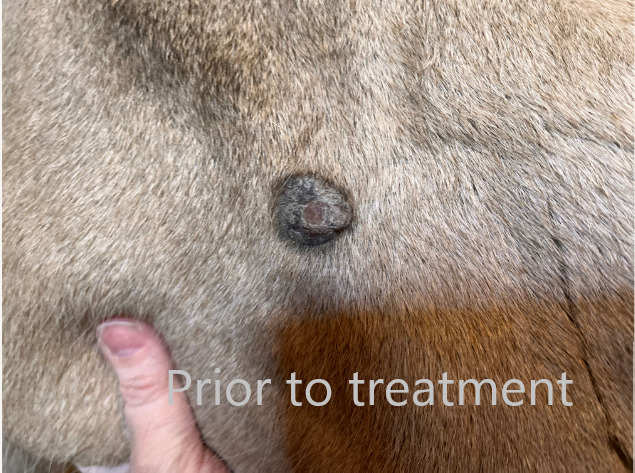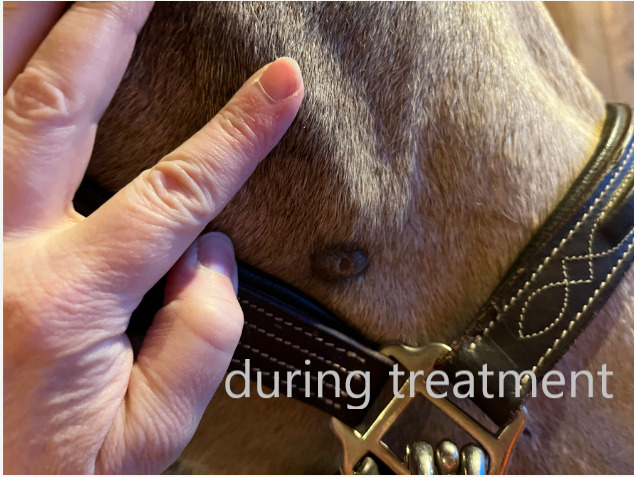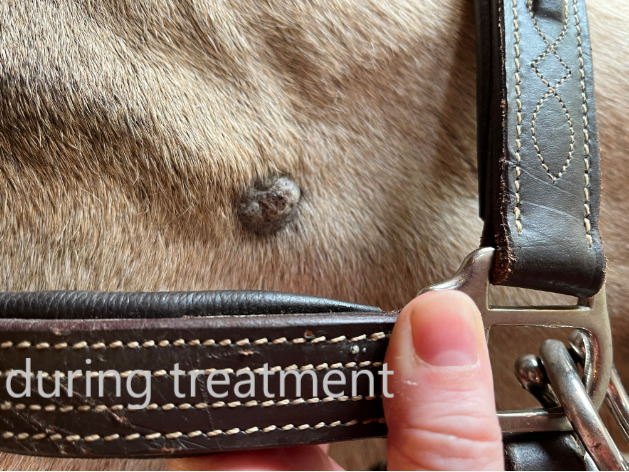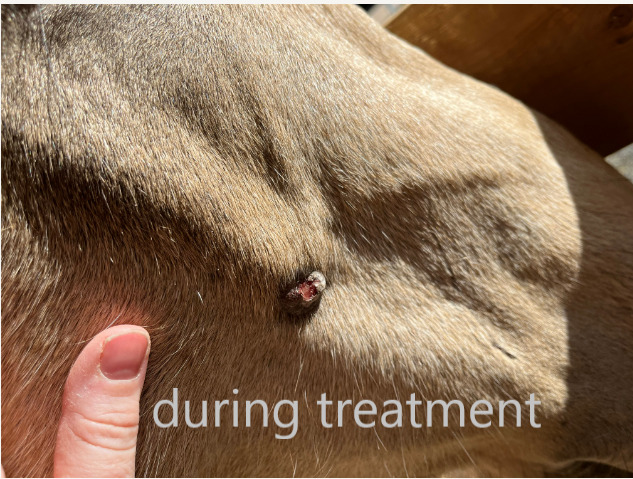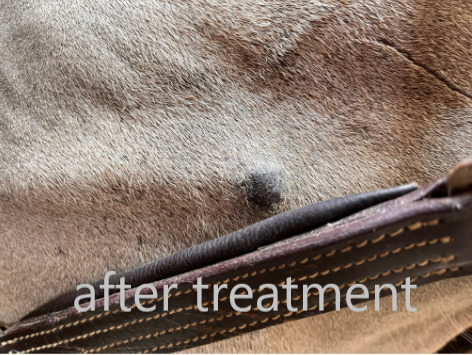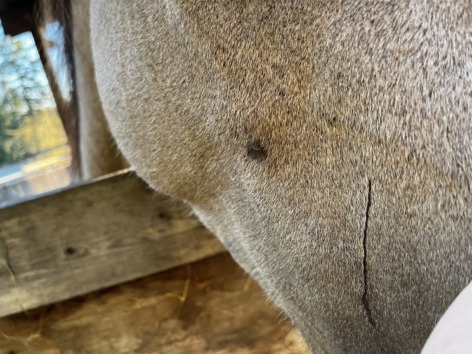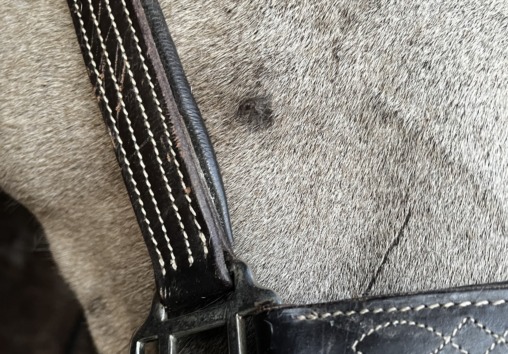July Case of the Month: The Hairless Spot
Doxsey is a 3-year-old paint gelding who’s very observant owner noticed a funny hairless spot on his right cheek that was slowly growing over time. When she first pointed it out to SEVS, we suspected it was likely a sarcoid. Sarcoids are benign skin tumors which develop in horses in response to infection with a bovine papilloma virus. Because the virus is evolved to live in cattle cells, it is unable to complete its lifecycle within horse cells and does not form the self-limiting warts typical of papilloma infections. Sarcoids can present in a variety of ways, which are divided into 6 different classes: occult, verrucose, nodular, fibroblastic, mixed, and malignant. Occult sarcoids are the “mildest” form of the condition and are flat areas of thickened skin with hair loss and are often circular in shape. Verrucose sarcoids are flat, scaley or scabby patches of hairless skin which sometimes ulcerate. The Nodular variety are firm masses of varying sizes which may present as single nodules or a grouping of multiple nodules together. Fibroblastic sarcoids are typically large, fleshy masses that often ulcerate and bleed easily. The Mixed form of sarcoids is a combination of any of the previously listed types. And finally, Malignant sarcoids are the most invasive form of the disease, characterized by groups of nodules, sometimes with ulcerations. The malignant form of sarcoids invade into deeper tissues and spread along the lymphatic system, creating firm lines of tumour tissue under the skin in addition to the external masses.
Sarcoids can sometimes resolve spontaneously, or may remain stable and not bother the horse for years, but in some cases they continue to grow, or are in a location that interferes with tack placement, so require removal. There are a variety of ways to attempt to treat sarcoids, and unfortunately success of treatments can be highly variable between cases.
Doxsey’s sarcoid, as you can see from the photos, is a nodular sarcoid. Given the location near blood vessels and nerves in his face, surgical removal is not the preferred option for treatment. Through discussions with Doxsey’s owner, it was decided to treat his sarcoid with a medication called immunocidin. This medication works by stimulating the immune system to recognize and attack the sarcoid cells when it is injected into the tumour. Treatments are done once every 2 weeks for 3-4 treatments, depending on the response of the sarcoid.
Doxsey has shown a positive response to the treatment, and as you can see in the photos, he’s shown a gradual reduction in tumour mass with progressive treatments down to a small area of hairless skin remaining.
If you have any concerns about possible sarcoids on your horse, contact us at Swiftsure Equine for an exam and consultation.
- Prior to Treatment
- During Treatment
- During Treatment
- During Treatment
- After Treatment
- After Treatment
- After Treatment

